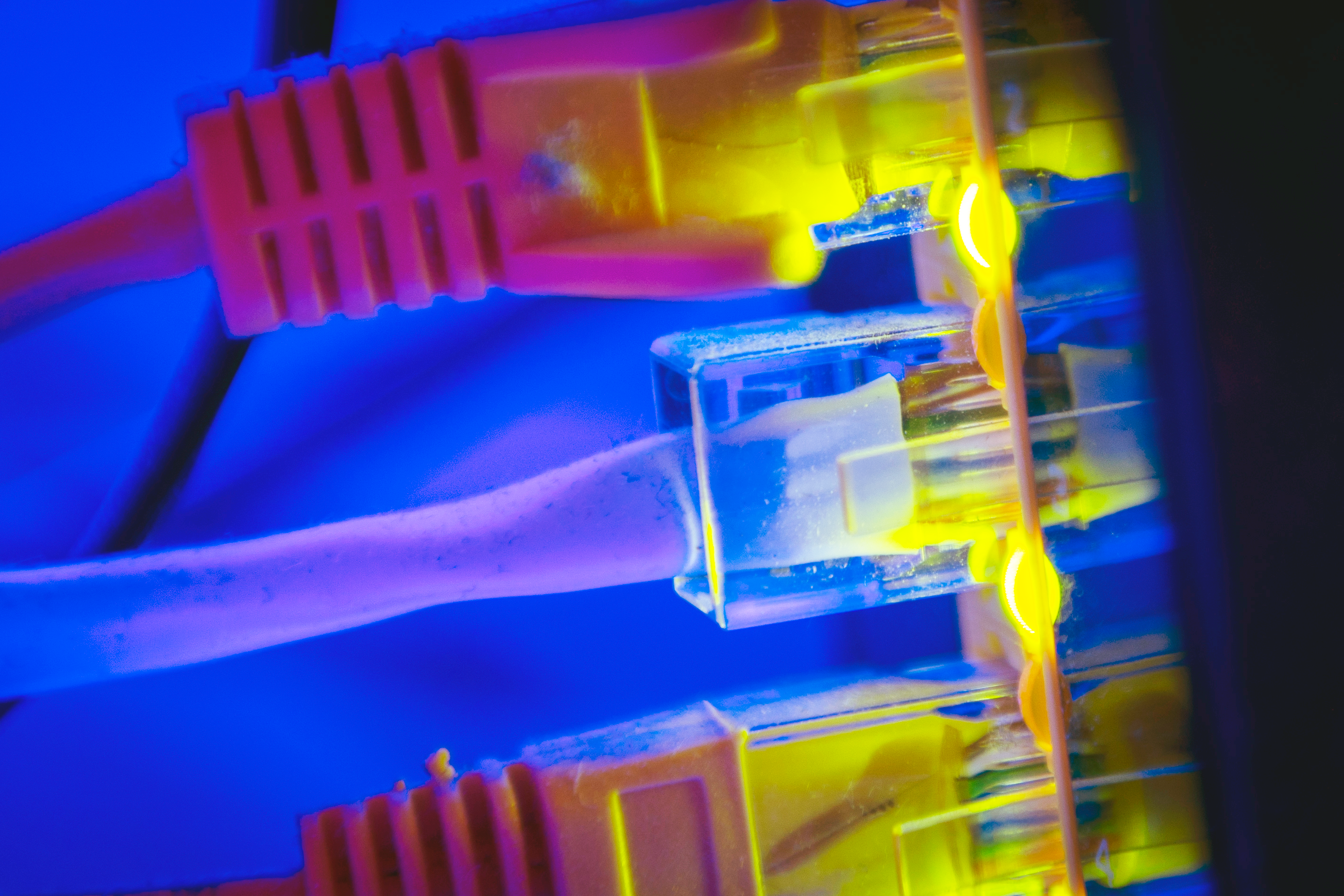The new FCC net neutrality rules have a gaping loophole
Caveat emptor indeed

The FCC voted Thursday on updated rules for internet service providers that will allow ISPs to charge consumers more if they want fast connection speeds for video conferencing, streaming, gaming, or using video streaming services.
The new rules will return to a sense of net neutrality based on the 2015 rules, but critics say they haven’t kept up with advances in networking technology.
The good news: The proposed rules will ban blocking and throttling web pages and applications. Also, the proposed guidelines ban Internet Service Providers (ISPs) from charging an app provider for faster connection speeds.
The bad news: However, the new rules do not prevent an ISP from charging customers more for a so-called internet “fast lane” for certain services.
Using a network technology called 5G network slicing, ISPs can speed up connections for specific applications or webpages, creating a 5G fast lane for priority connections. The proposed FCC guidelines will allow these fast lanes as long as the app provider — like Meta — isn’t charged for receiving priority service.
The loophole: The protection for app providers doesn’t extend to consumers, which means they could pay more for access to faster connections while viewing Instagram reels or getting on a Zoom call.
What is network slicing?
According to Verizon's corporate blog, network slicing is a virtual networking technology that allows an ISP to create a 5G fast lane that's separate from regular internet traffic. This fast lane can be used to prioritize certain applications or web traffic.
Sign up to receive The Snapshot, a free special dispatch from Laptop Mag, in your inbox.
Essentially, apps running on the network slice are given extra speed as the ISP has set them as a priority. Video conferencing, gaming, and video applications are often viewed as ideal candidates for network slicing. However, telecommunications vendor Ericsson has already compiled a report on the top 10 industries that would benefit from network slicing. Those applications include healthcare services, manufacturing, and transportation.
The commercial side of the technology will certainly be viewed as profitable. A different Verizon demo showcased the network slicing used by a video streaming application called Mobile Creator Studio, which is used by the F1 McLaren team and rgency service coordination. T
However, the commercial side of the technology could certainly be quite profitable: A different Verizon demo showcases the network slicing used by a video streaming application called Mobile Creator Studio, which is used by the F1 McLaren team and content creators at TwitchCon. AT&T confirmed in an FCC filing this month that carriers will use network slicing to "better meet the needs” of specific business and consumer applications.
While network slicing to coordinate public safety can only be a positive ripple effect, it's plain to see how extra costs for high-speed connections could end up on the bills of consumers.
The flip side of network slicing is getting users to pay for faster network speeds on selected applications. In the future, this may mean you might have to pay extra for an optimal video streaming, conferencing, or gaming experience.
Network slicing is a double-edged sword
Critics of network slicing say that it lets ISPs choose which apps get priority. As legal resource Law360 reports, the FCC “will not automatically apply net neutrality rules to 5G mobile network ‘slices.’”
Leaving network slices uncategorized in the new FCC rules leaves the door open for ISPs to set their own terms.
In a recent blog post reported on by ArsTechnica, Stanford Law Professor Barbara van Schewick warns that letting ISPs choose which applications get priority treatment violates core net neutrality principles, and it would greatly favor the most popular applications. As van Shewick theorizes, it also opens the door for ISPs to start charging for tiers of 5G service or offering limited-time passes into the network slice service.
What does the internet with network slicing look like?
Given the current popularity of subscription services, adding network slicing as a subscription tier service doesn’t seem unreasonable. And while network slicing is a 5G feature, ISPs already offer 5G for home internet. So this could affect mobile gaming and any gaming that requires an internet connection. At this point, that means most blockbuster AAA video games.
Network slicing could also boost video conferencing on popular applications like Zoom or Microsoft Teams, while lower-tier services like Discord wouldn’t see the same boost. These fast lanes could be applied to social media applications and video streaming services like Netflix and Hulu.
What this means for the future of net neutrality

While the FCC has not explicitly banned network slicing, the commission plans to review instances of "unreasonably discriminatory" decisions by ISPs on a case-by-case basis.
The rules include provisions on the no-blocking rule, stating that "broadband providers may not impose a fee on edge providers to avoid having the edge providers' content, service, or application throttled."
As RCRWireless writes, the net neutrality rules confirm that the FCC does not intend to “allow network slicing to be used to evade” the paid prioritization prohibition.
While the FCC intends to tackle network slicing in some cases, the current ambiguity around the technology creates the opportunity for ISPs to flood the market with fast-lane offerings because the FCC is reviewing them individually.
The FCC has intentionally left rules around network slicing vague, as "potential use cases for network slicing are still under development."
The FCC has never banned prioritization, just paid prioritization on behalf of the application or edge provider.
If the network slice fast lane subscriptions roll out, we could see them expand into plenty of uses. AT&T, Verizon, and T-Mobile are already working on network slices for media, entertainment, healthcare, government, transportation, and manufacturing. And once the network-sliced fast lanes are out for mobile networks, the home internet options will follow.
Unless pressure is put on the FCC to ensure a strong stance against ISP discrimination when reviewing potential cases, it seems likely that will see these paid network-sliced fast lanes.
In the rules draft, the FCC recognizes the inherent danger of network slicing when it comes to evading open internet rules, stating:
“We will closely monitor these uses to evaluate if they are providing the functional equivalent of [Broadband Internet Access Service], being used to evade our open Internet rules, or otherwise undermining investment, innovation, competition, or end-user benefits in the Internet ecosystem.
"We will also monitor if network slicing affects the last-mile capacity available for, and the performance of, [Broadband Internet Access Service]. If necessary, we will take action to address harmful uses of network slicing.
"We believe this approach will allow for the continued development and implementation of network slicing while at the same time ensuring that the use of network slicing in connection with [Broadband Internet Access Service] conforms to the classification and rules adopted in this Order.“
While some network slicing opportunities benefit the public, most commercial applications of the technology could create an unequal playing field.
It’s one thing to create network slices for emergency responders and it’s another to make a 5G fast lane for Netflix streaming and then charge customers for it.
What can the public do about network slicing?
Broadband Breakfast reports that New America’s Open Technology Institute sent an open letter to the FCC in February, arguing for tighter restrictions on network slicing as a “wholesale exemption from the open internet rules for any specialized application or service.” The FCC’s position hasn’t budged, though. The FCC appears steadfast in its position that the current plan is best for handling network slicing.
As Professor van Shewick theorizes in her blog post about network slicing, “For example, would it be “unreasonably discriminatory” to create a 5G fast lane that includes the most popular apps in a category since it responds to consumer preferences?... This gives ISPs cover to flood the market with various fast-lane offerings, arguing that their version does not violate the no-throttling rule and daring the FCC to enforce it. And if the mobile ISPs do this, the cable companies will soon follow. Cable companies have the tech to build their fast lanes, and increasingly they compete with 5G to the Home services. If T-Mobile and Verizon start selling home plans have “enhanced streaming video,” you can bet the cable companies will launch their own version.”
As internet users, our ability to counteract the influence of network slicing is a bit limited. We can refuse to engage with network-sliced fast lanes. Boycotts have historically been effective but require commitment from the public at large. We can also submit informal complaints and share stories with the FCC to help add context on why we feel network slicing should be strongly regulated and file complaints against specific iterations of network slicing.

A former lab gremlin for Tom's Guide, Laptop Mag, Tom's Hardware, and TechRadar; Madeline has escaped the labs to join Laptop Mag as a Staff Writer. With over a decade of experience writing about tech and gaming, she may actually know a thing or two. Sometimes. When she isn't writing about the latest laptops and AI software, Madeline likes to throw herself into the ocean as a PADI scuba diving instructor and underwater photography enthusiast.
